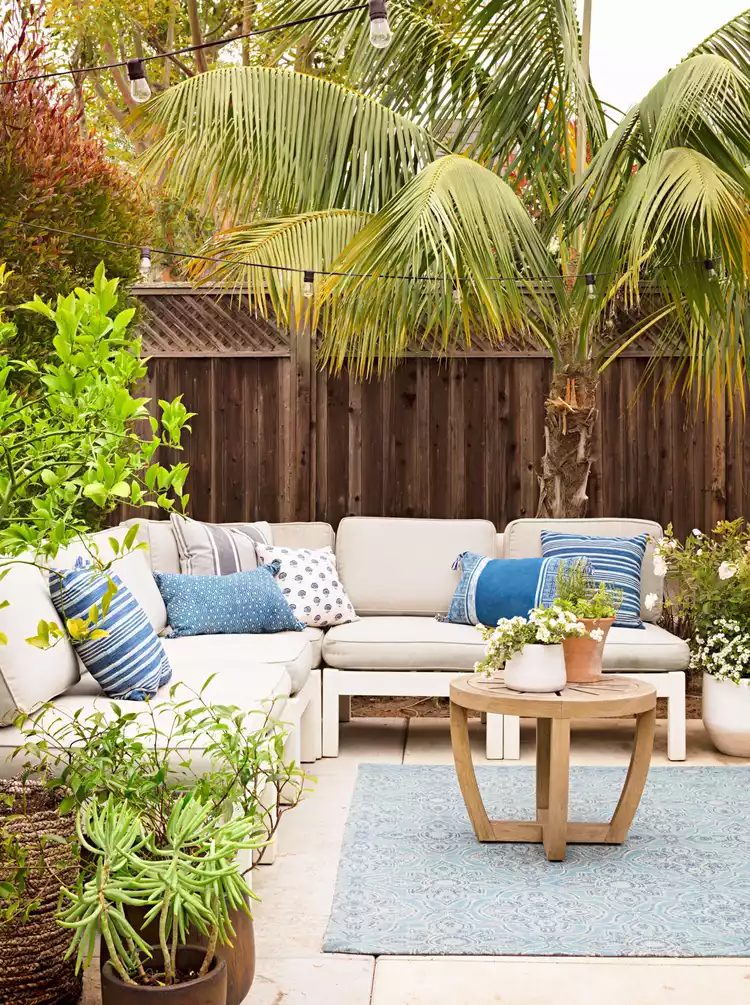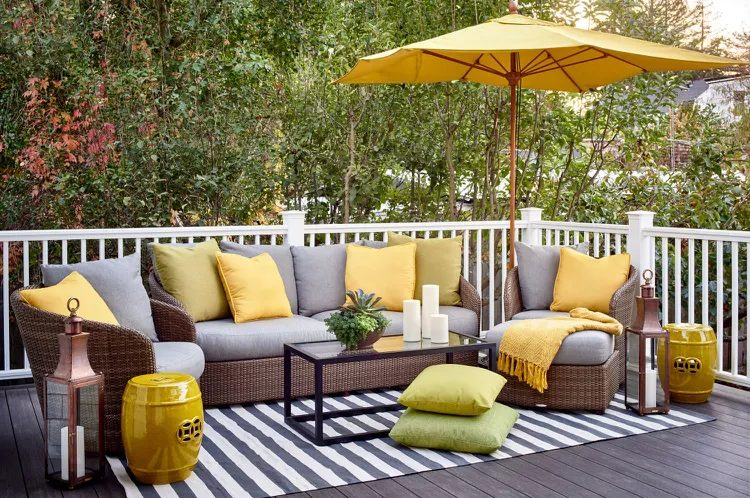Enjoy your outdoor furniture for years to come with these expert tips for correctly storing it during the winter months.

There’s nothing quite like enjoying a warm summer’s night lounging on your patio or deck. Whether it’s a quiet moment alone with a glass of wine or a neighborhood potluck dinner party, comfy seating is a requirement. Outdoor furniture is as much of an investment as what’s inside your house, so it’s important to protect your pieces properly to avoid unnecessary damage.
With help from an expert, we’ve compiled a cheat sheet to help you store your outdoor furniture for the winter, as well as some pre- and post-season tips.
Why Winterize Outdoor Furniture?Why Winterize Outdoor Furniture?
Taking care of your furniture in the off season helps extend its life and, therefore, your wallet. You’ll also save yourself time in the long run because there won’t be as much damage control you need to do in the springtime. From an aesthetic standpoint, your tables, chairs, and outdoor sofa will stay looking pristine year after year. If done correctly, you can even potentially avoid having to make space indoors for your furniture.
But first, these are the steps to take before cold weather sets in.

How to Store Outdoor Furniture
1. Clean Outdoor Furniture Before Storing
According to Terry Lin, cofounder and chief design officer at Outer, a sustainable outdoor furniture company, it’s essential to give your furniture “a light clean at the end of each season to keep it free from debris and looking its best.” To do this, Lin recommends filling a bucket with warm water and a few drops of detergent. If you’ve noticed any stains on your furniture, add a small amount of bleach. While wearing gloves, dip your brush into the water, and gently scrub away dirt and debris from the frame of the furniture.
This method can be used on most materials, from teak to plastic and even metal. But if you’re concerned about the potency of the detergent, use a mild laundry or dish soap in the solution and skip the bleach. Avoid power washing your furniture, as the intense pressure can strip away the surface.
When it comes to fabric, Lin recommends investing in removable cushion covers. “You’ll be thanking yourself later for choosing an outdoor cushion that has a removable feature,” he says. “This makes cleaning your outdoor cushions a much simpler task, as they’re able to be thoroughly washed without compromising the cushion insert when it’s stored.” These should be washed at least once per season, so tackle the task as warm weather dissipates.
2. Decide Where and How to Store Outdoor Furniture
Once the furniture is prepped, it’s time to choose a storage spot. You can absolutely create space in your garage to tuck everything indoors to protect the pieces. However, many people don’t have the space for this and, even if they do, furniture can still be exposed to freezing temperatures and cold-weather elements, especially if the garage door is opened frequently.
The good news? “Taking additional steps to cover your outdoor furniture will extend the life of it and you’ll be able to enjoy the investment year after year without having to bring it inside,” says Lin. Picking a good cover is “an added layer of defense in the harshest conditions, allowing you the ability to leave furniture outside, even in extreme weather elements. It’s the best way to extend the life of your furniture, and maintain your comfy outdoor living area for years to come.”
Here’s what you should look for in a good outdoor furniture cover:
1 Durable fabric that is waterproof and fade-resistant. As an added bonus, Lin recommends looking for furniture covers with sloped angles so things such as snow and leaves can easily slide off rather than sitting on top.
2 Buckles and straps. Snug covers prevent dirt and moisture from seeping in.
3 .Covers that are easy to put on and take off. This includes covers that come with waterproof zippers.
4 Dry vents to prevent moisture build-up. “While you want to keep water out, you don’t want to seal moisture in. Without proper airflow, outdoor furniture can retain moisture and lead to mildew. Look for covers with dry vents that allow air to cycle through without letting any dirt, debris, or water touch your sofa. Cushions stay dry, fresh, and ready to sit on at all times.”
If you’re still a little wary about keeping chair cushions or throw pillows outside all winter long, they can certainly find a home indoors for a few months. If you’re short on space or concerned about pests or moisture (especially if storing in the basement or attic), vacuum seal them. Just be sure that they’re fully clean and dry before packing them away.
3. Fix Any Damage Upon Spring
If after securing covers on all your outdoor furniture and safekeeping the cushions indoors, there manages to be some damage to your furniture, Lin has a few simple fixes for you.
When it comes to teak pieces, he recommends using a specific cleaner recommended by the manufacturer to restore any color fading. Afterward, “apply a teak oil, which helps keep the grain from cracking and gives the material an attractive sheen.”
“To restore aluminum furniture to its original glory, spray down the aluminum parts with a garden hose to remove loose dirt, leaves, and debris.” The same goes for low-maintenance plastic furniture.
Accumulated rust on wrought iron should be gently buffed away with a brush. For any other stains, feel free to repeat the cleaning process you used before storing the furniture for the season.

